Chemistry is so much fun, and we have tons of cool chemistry experiments to share with you. Like our awesome physics experiments, we decided we needed to put together a list of fun chemistry projects kids can do at home or in the classroom. Check out these examples of easy chemical reactions below!
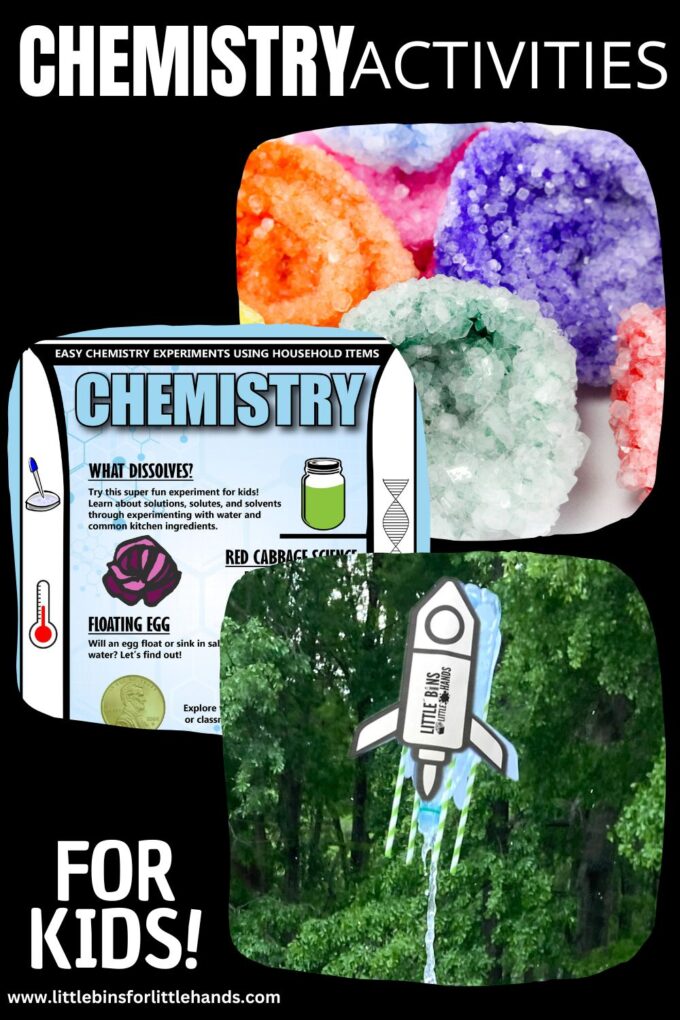
Easy Chemistry Projects For Kids
Here you will find over 30 simple chemistry experiments for kindergarten, preschoolers, and elementary kids to enjoy at home or in the classroom. The only difficulty will be deciding which science experiment you want to try.
Below you will find a fun mixture {no pun intended} of chemistry activities that include chemical reactions, mixing saturated solutions, acid and bases, exploring the solubility of both solids and liquids, growing crystals, making slime, and so much more!
Our science experiments are designed with you, the parent or teacher, in mind! Easy to set up, and quick to do, most activities take only 15 to 30 minutes to complete, and are heaps of fun.
Plus, our supply lists usually contain only free or cheap materials you can source from home. Any of these chemistry experiments below would be great for chemistry at home.
Chemistry At Home
Can you do cool chemistry experiments at home? You bet! Is it hard? Nope!
What do you need to get started? Simply get up, walk into the kitchen, and start rummaging through cupboards. You will surely find some or all of the supplies you will need for these chemistry projects below.
Check out our list of must-have simple supplies for a science kit and a slime kit.
These chemistry experiments work well with multiple age groups, from preschool to elementary and beyond. Our activities have also been readily used with special needs groups in high school and young adult programs. Provide more or less adult supervision depending on your kids’ abilities!
Read on to find out our favorite chemistry experiments you can do in the classroom or at home that are totally doable and make sense for kids in grades K-5! You can also review our lists for specific grades below.
Suggestion: Make a lemon battery for older kiddos and explore a lemon volcano with younger kiddos!
Chemistry For Preschoolers
Let’s keep it basic for our younger or junior scientists! Chemistry is all about how different materials are put together and what they are made up of, like atoms and molecules.
What can you do with your youngest scientists? While working 1-1 or in a very small group is ideal, you can explore chemistry in a few fun ways that don’t require a lengthy setup or a lot of directions to follow. Do NOT overcomplicate the ideas!
Take, for example, our very first baking soda science experiment (age 3). So simple to set up, but so lovely to watch the amazement on my son’s face.
Check out these fun ways for preschoolers to explore science…
- Make liquid mixtures! Mix water and oil in a jar, let it rest, and observe what happens.
- Make solid mixtures! Mix two solid items and observe the changes!
- Mix a solid and a liquid! Add ice to a drink and observe the changes!
- Make a reaction! Set up a tray with baking soda in small cups and colored vinegar in small cups with pipettes. Mix and observe!
- Make oobleck! Mix cornstarch and water for a weird and messy science activity.
- Explore characteristics of things! Use new science words to describe how different materials feel. Explore squishy, hard, rough, smooth, wet, etc…
Much of preschool science is about you sharing new experiences with them that are relatable and simple. Ask questions, share new words, and offer verbal prompts to get them to communicate with you about what they see!
Chemistry Science Fair Projects
Science projects are an excellent tool for older kiddos to show what they know about science! Plus, they can be used in all sorts of environments including classrooms, homeschool, and groups.
Kids can take everything they have learned about using the scientific method, stating a hypothesis, choosing variables, and analyzing and presenting data.
Want to turn one of these fun chemistry experiments into a science project? Then you will want to check out these helpful resources.
Bonus: States of Matter Experiments
Explore solids, liquids, and gasses through various simple science experiments. Plus look for a fantastic free printable pack to go along with your states of matter lesson plans.
65 Chemistry Experiments You Want To Try
We have divided our chemistry experiments below into chemical reactions, acids, and bases, chromatography, solutions, polymers, and crystals. You’ll find that some experiments also explore concepts in physics.
Chemical Reactions
A chemical reaction is a process where two or more substances react together to form a new chemical substance. This might look like a gas formed, cooking or baking, milk souring, etc.
Sometimes a physical change occurs, like our popcorn experiment or melting crayons, rather than a chemical change. However, these experiments below are all great examples of chemical change, where a new substance is formed.
CHECK OUT: Examples Of Physical Change and Chemical Change Examples
Can chemical reactions happen safely at home or in the classroom? Absolutely! This is one of the most fun parts of chemistry for kids, and you will find lots of ideas below for safe chemical reactions you can do with your junior scientists.
Baking Soda Vinegar Bottle Rocket

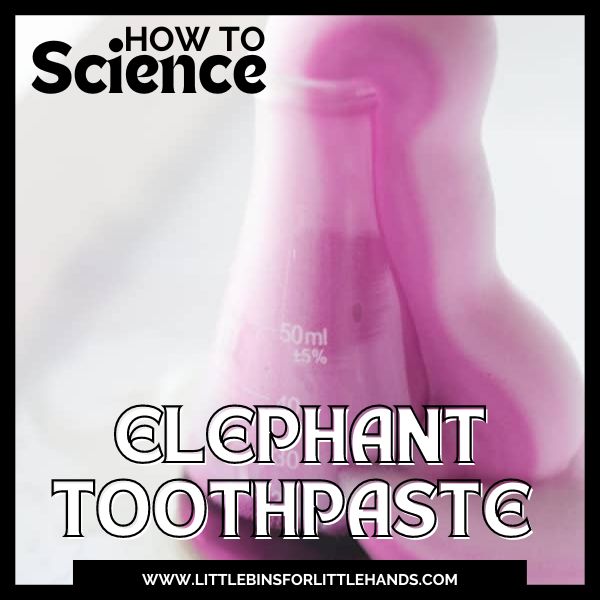
Acids And Bases
Acids and bases are important for many chemical processes in everyday life. An acid has hydrogen ions and can donate protons. Acids taste sour and have a pH from 0 to 7. Vinegar and citric acid are examples of acids.
Bases are molecules that can accept hydrogen ions. They have a pH higher than seven and can taste bitter. Sodium bicarbonate or baking soda and ammonia are examples of bases. Learn more about the pH scale.
Vinegar and baking soda experiments are classic acid-base reactions. You’ll also find experiments that use an acid such as vinegar or lemon juice. We have so many fun variations that your kids will love to try! Check out these acid-base chemistry experiments below.
Baking Soda and Vinegar Volcano
Chromatography
Chromatography is a technique that involves the separation of a mixture into its parts so you can see each one individually.
This marker and paper chromatography lab uses chromatography to separate the pigments in a black marker.
Or set up a leaf chromatography experiment to find the hidden pigments in the leaves in your backyard!
Solutions
A solution is a mixture of 2 or more solutes dissolved in a solvent up to its solubility limit. It most often refers to liquids, but solutions, gases, and solids are also possible.
A solution will have its components evenly distributed throughout the mixture.
Chemistry experiments involving solutions are great for kids. Gather liquids you commonly find in your kitchen, oil, water, detergent, etc., and explore what dissolves.
Polymers
A polymer is a huge molecule made up of many smaller molecules layered together in repeating patterns called monomers. Putty, slime, and cornstarch are all examples of polymers. Learn more about the science of slime polymers.
Making slime is great for at-home chemistry and is also tons of hands-on fun! It’s also a classic middle school science demonstration for the classroom. Here are a few of our favorite slime recipes to get you started.
Explore polymers with a simple cornstarch and water mixture. Check out these fun variations of oobleck below.
Crystals
A crystal is a solid material with a highly ordered internal structure of atoms, molecules, or ions held together by chemical bonds.
Grow crystals and observe them by mixing up a super-saturated solution and leaving it for several days to let the crystals form.
Simple to grow and taste-safe, a sugar crystals experiment is more accessible for younger kids, but you can also try growing borax crystals for older kids.
Check out our fun theme variations of growing crystals too!
More Helpful Science Resources
Here are a few resources that will help you introduce science more effectively to your kiddos or students and feel confident yourself when presenting materials. You’ll find helpful free printables throughout.
- Best Science Practices (as it relates to the scientific method)
- Science Vocabulary
- 8 Science Books for Kids
- All About Scientists
- Science Supplies List
- Science Tools for Kids
Printable Science Projects For Kids
If you’re looking to grab all of our printable science projects in one convenient place plus exclusive worksheets and bonuses like a STEAM Project pack, our Science Project Pack is what you need! Over 300+ Pages!
- 90+ classic science activities with journal pages, supply lists, set up and process, and science information. NEW! Activity-specific observation pages!
- Best science practices posters and our original science method process folders for extra alternatives!
- Be a Collector activities pack introduces kids to the world of making collections through the eyes of a scientist. What will they collect first?
- Know the Words Science vocabulary pack includes flashcards, crosswords, and word searches that illuminate keywords in the experiments!
- My science journal writing prompts explore what it means to be a scientist!!
- Bonus STEAM Project Pack: Art meets science with doable projects!
- Bonus Quick Grab Packs for Biology, Earth Science, Chemistry, and Physics
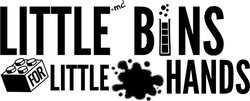


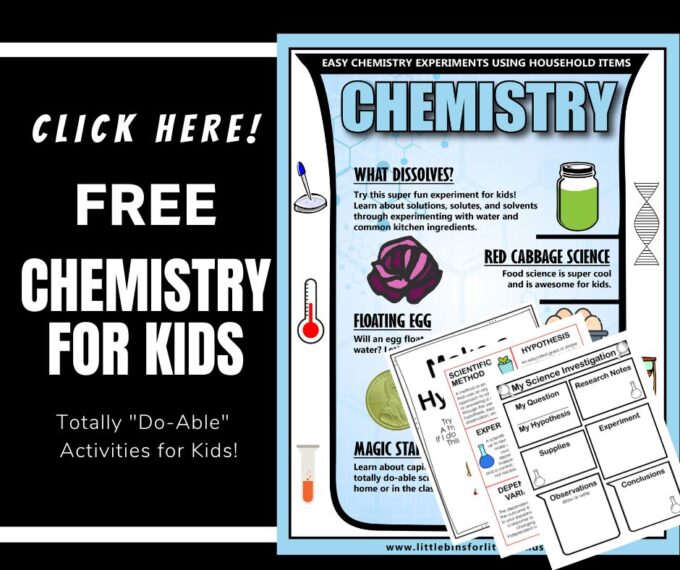
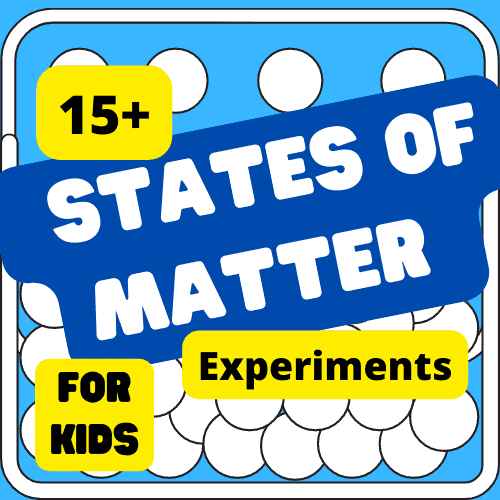
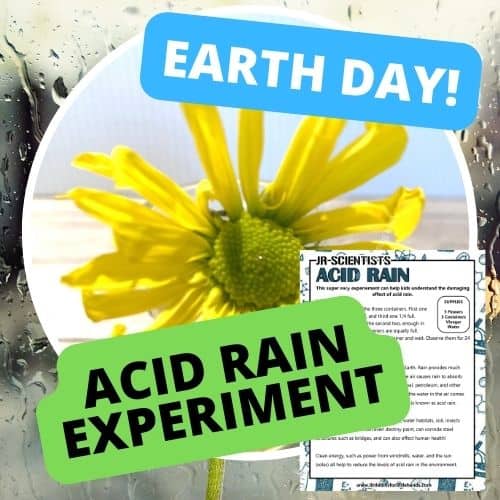
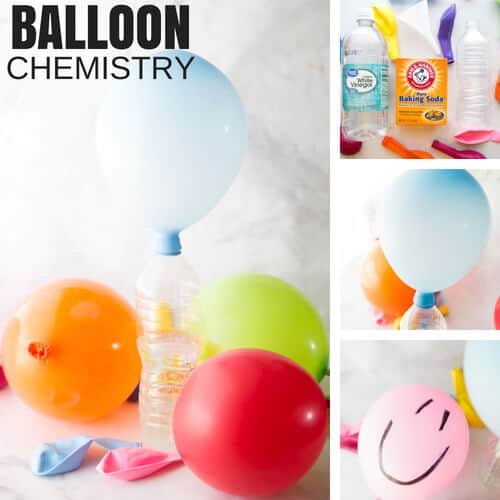
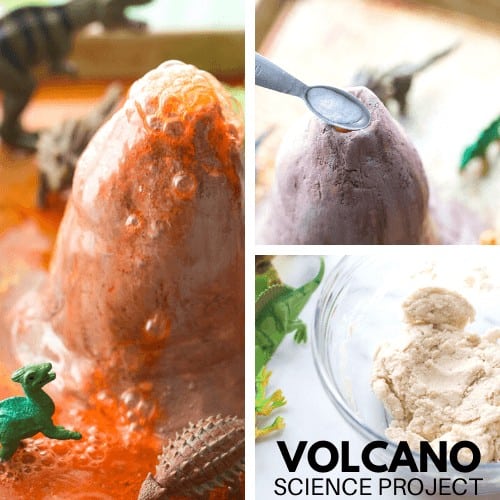
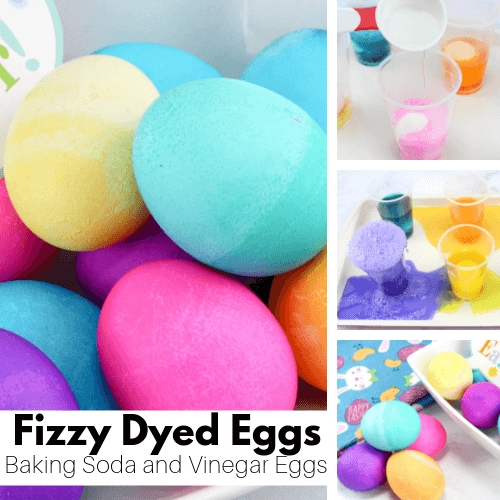
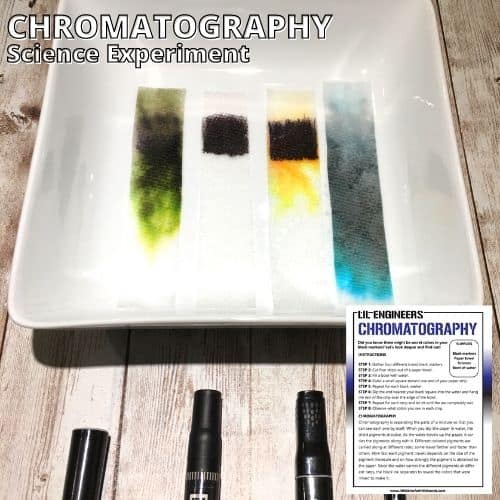


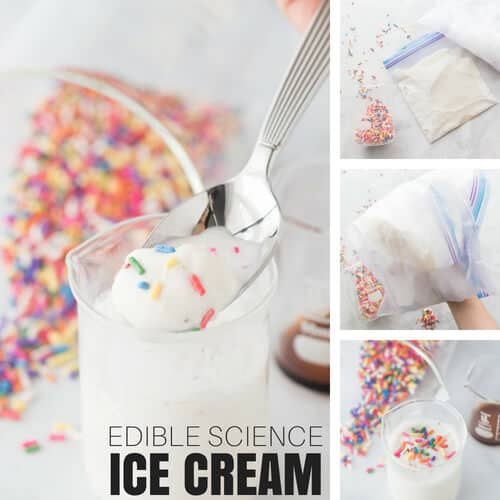
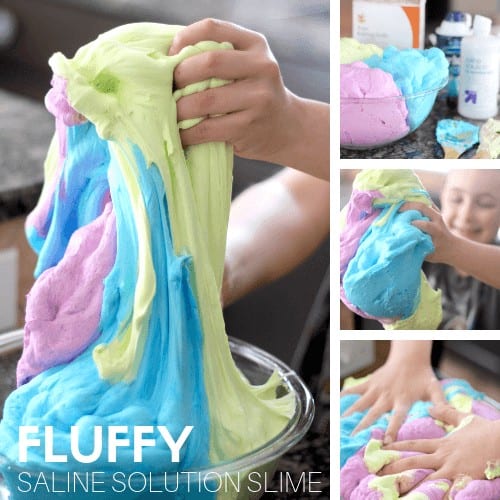
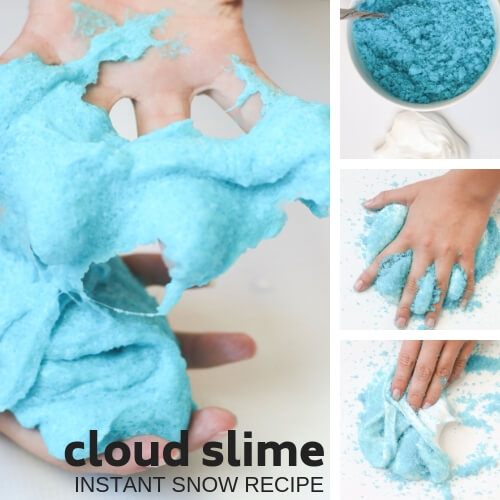
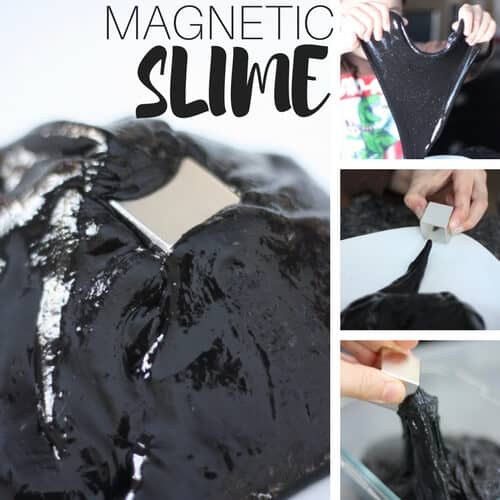

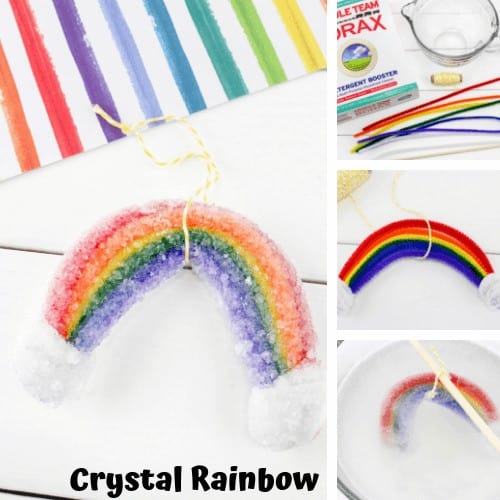
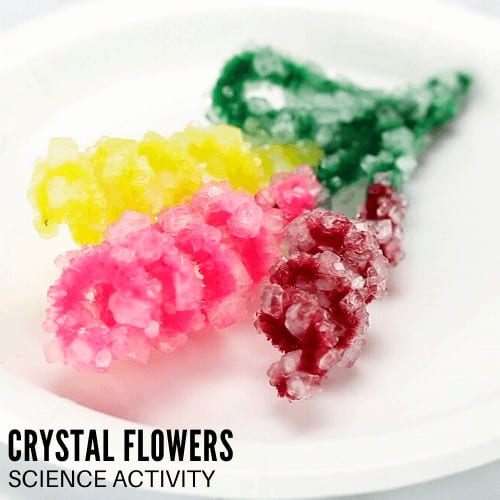
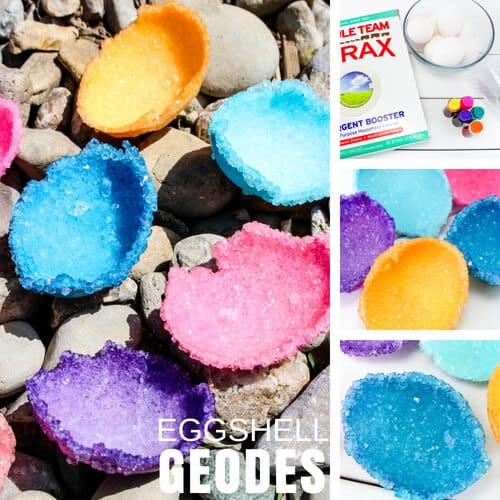
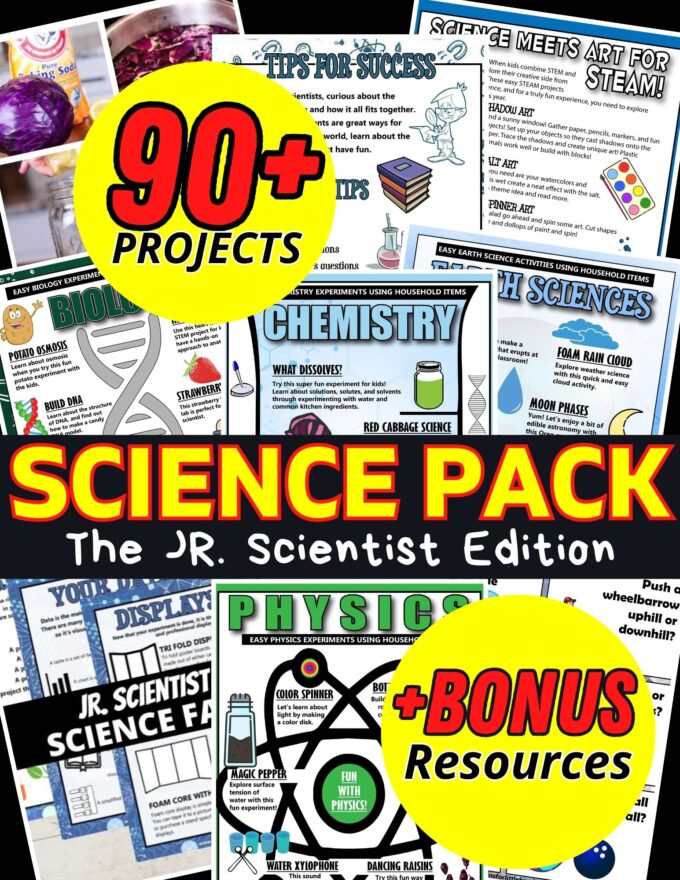
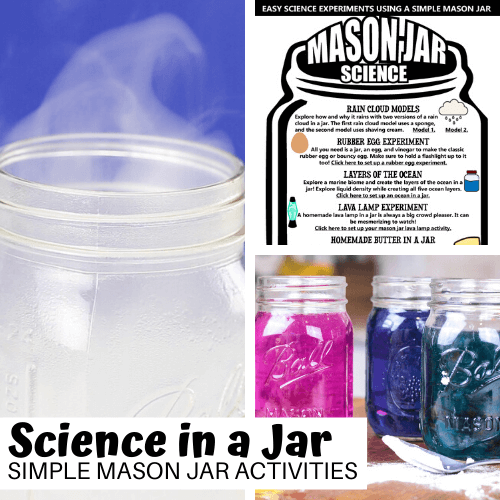
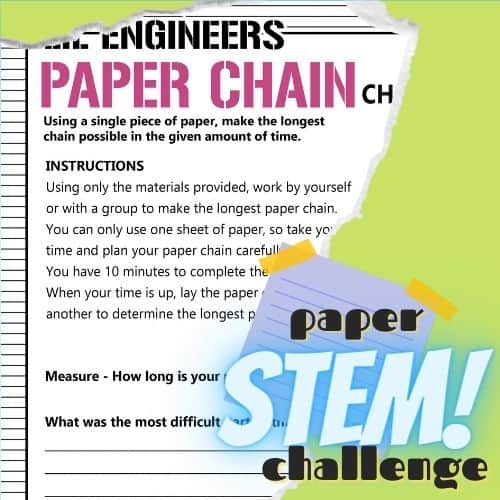
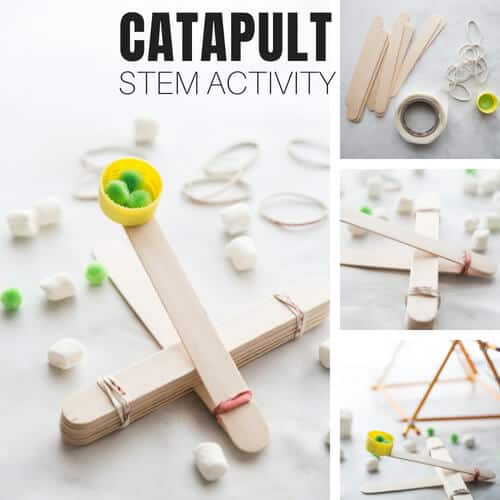
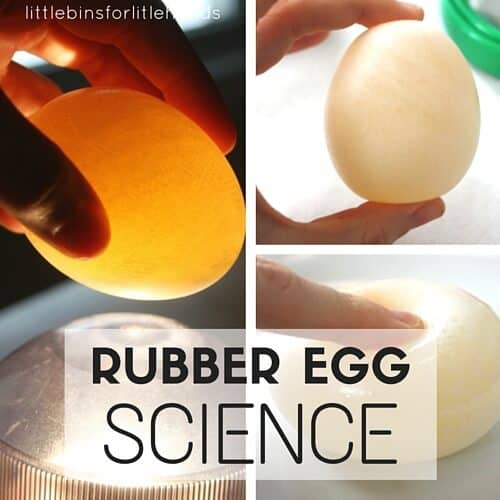

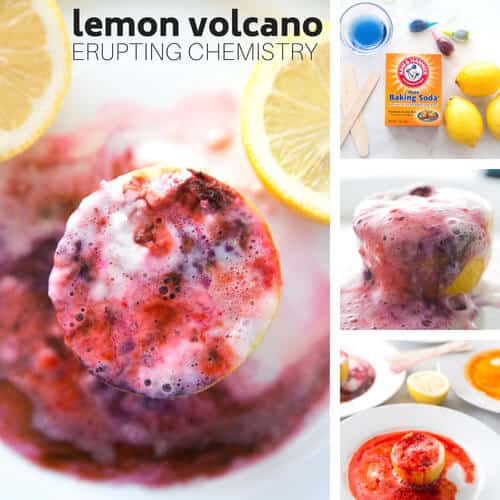
17 Comments
Comments are closed.